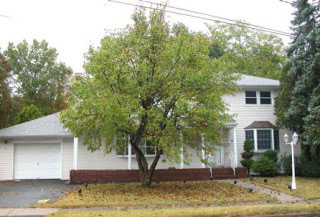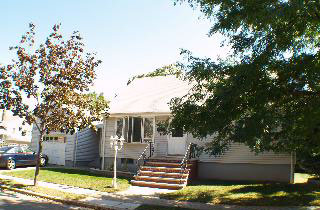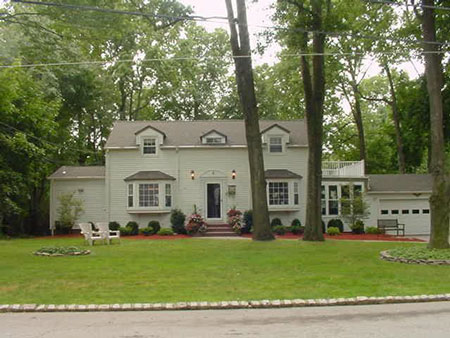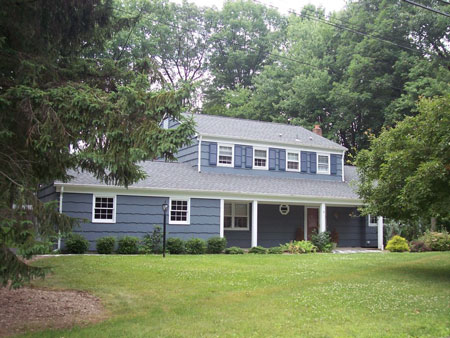Ever since the Great Depression, the American home-loan business has included a dollop of socialism. It was sometimes lost from view amid the frenzy of the housing boom, when Wall Street eagerly provided capital for lending. But with that game over, the government’s role is expanding again.
In a growing percentage of cases, government-linked bodies are the ones putting up the cash for home loans and taking the risk that a borrower won’t pay the money back. Private enterprise’s role is narrowing in many instances to the job of arranging loans, providing the initial funding until the loans can be sold, and handling the monthly paper work.
For home buyers, the renewed dominance of government-related entities means the end of the era of endless choice and easy approvals on mortgages. Borrowers now generally must meet tighter standards familiar from earlier years, such as proving their income and making a down payment of 10% to 20%.
The expanding government role isn’t the result of initiatives from Washington. As investors have fled from housing exposure, lenders wanting to sell loans they make have had no choice but to rely more on existing agencies that will still buy mortgages, like government-sponsored Fannie Mae and Freddie Mac.
To raise funds to lend in the first place, lenders are leaning more heavily on the 12 regional Federal Home Loan Banks, which are cooperatives chartered by Congress but owned by commercial banks and other financial institutions. The Home Loan Banks’ loans to financial institutions — which are known as “advances” and typically secured by mortgage loans — grew 29% in the first nine months of 2007, to $824 billion. Fannie Mae, Freddie Mac and the Home Loan Banks aren’t government agencies, but because of their federal charters, it’s widely assumed the government would bail them out if they ever got into a crisis.
In addition, some mortgage lenders — among them the largest, Countrywide Financial Corp. — are growing more reliant on deposits insured by another government agency, the Federal Deposit Insurance Corp. “Capitalism isn’t perfect,” says CEO Angelo Mozilo of Countrywide, which had a $1.2 billion loss in the third quarter as investors suddenly grew allergic to mortgages they had eagerly bought before.
…
The new reliance on the government-sponsored mortgage buyers has prompted some congressmen and senators to call for giving them even more scope to purchase or guarantee mortgages. The companies package loans made by mortgage lenders into securities; they keep some of these securities as investments, and others are sold to investors world-wide. For mortgage securities sold to other investors, Fannie and Freddie collect fees for guaranteeing that payments will be made on the loans.
…
Among U.S. mortgage securities offered to investors, the portion guaranteed by Fannie and Freddie has rebounded to around 72% in October from as low as about 41% in 2005 at the height of the housing boom, when Wall Street gobbled up loans with no federal backing, according to trade publication Inside Mortgage Finance.
The shift isn’t just because Fannie and Freddie are guaranteeing more loans, although they are. At the end of September, Fannie either owned or guaranteed $2.76 trillion of mortgages, or around a quarter of the total outstanding, up from $2.48 trillion a year earlier.
…
Fannie and Freddie require borrowers to pay for mortgage insurance if they don’t make sizable down payments, and they generally require more documentation of income than some private-sector lenders did in recent years. Fannie and Freddie also haven’t gone as far as Wall Street did in accepting large amounts of loans that allow borrowers to make minimal payments in the early years, an arrangement that can result in a growing loan balance. Because investors don’t want to buy these permissive loans either, few are currently being made.
…
Fannie, Freddie and mortgage lenders are facing the challenge of deciding how much credit to extend when prices of homes, the collateral backing the loans, are falling in much of the country. Regulators and politicians are prodding Fannie, Freddie and the FHA to help subprime borrowers refinance into fixed-rate loans with payments they can afford. The risk is that these borrowers, given their poor credit histories, would run into trouble again.
Some analysts fear Fannie and Freddie would need to raise additional capital if defaults soared well beyond current expectations. Their stocks have started to wobble, though they are still holding up far better than shares of purely private-sector mortgage companies. Fannie last week reported that its earnings in the first nine months were down 56% from a year earlier, to $1.51 billion. On the New York Stock Exchange, Fannie’s shares closed at $47.06 yesterday, down 21% so far this year.
Despite America’s market system, politicians have long behaved as if housing were too important to be left exposed to the full blast of market forces. Congress has always given overwhelming backing to the FHA, Fannie Mae and the home loan banks — all created during the Depression when banks were failing and mortgage credit evaporated. Freddie Mac was created in 1970 to supplement Fannie’s role.
…
Now the debate in Washington has shifted 180 degrees. “If these government-related entities were not in place, this [mortgage-default crisis] would be a disaster of far greater dimensions,” says Susan Wachter, a finance professor at the University of Pennsylvania’s Wharton School, who was a senior housing official in the Clinton administration and has done consulting work for Freddie. She notes that the companies kept money flowing into mortgages even at the height of investors’ panic in August.
Fannie and Freddie bring uniform standards to the mortgage securities they back, making the securities easier to trade and value, Ms. Wachter says. The trillions of dollars of mortgage securities that were sold without their involvement during the housing boom didn’t have uniform quality and have proven illiquid because investors find it hard to assess the risks.
…
Long after the current mortgage crisis is over, Fannie and Freddie are likely to keep reminding Congress of the turmoil of mid-2007, when other investors retreated but the two government-sponsored companies kept buying mortgages. Freddie recently posted on its Web site a note entitled “Shelter in a Storm,” declaring: “Even when other lenders stop lending, we continue to provide a steady source of home funding.”
Alex Pollock, a resident fellow at the American Enterprise Institute, agrees government-linked entities can help markets through a panic, but believes they shouldn’t dominate the home-loan business in other times. The trick is to withdraw the government support when it’s no longer needed and let the free market take over again, says Mr. Pollock, a former chief executive of the Federal Home Loan Bank of Chicago.






